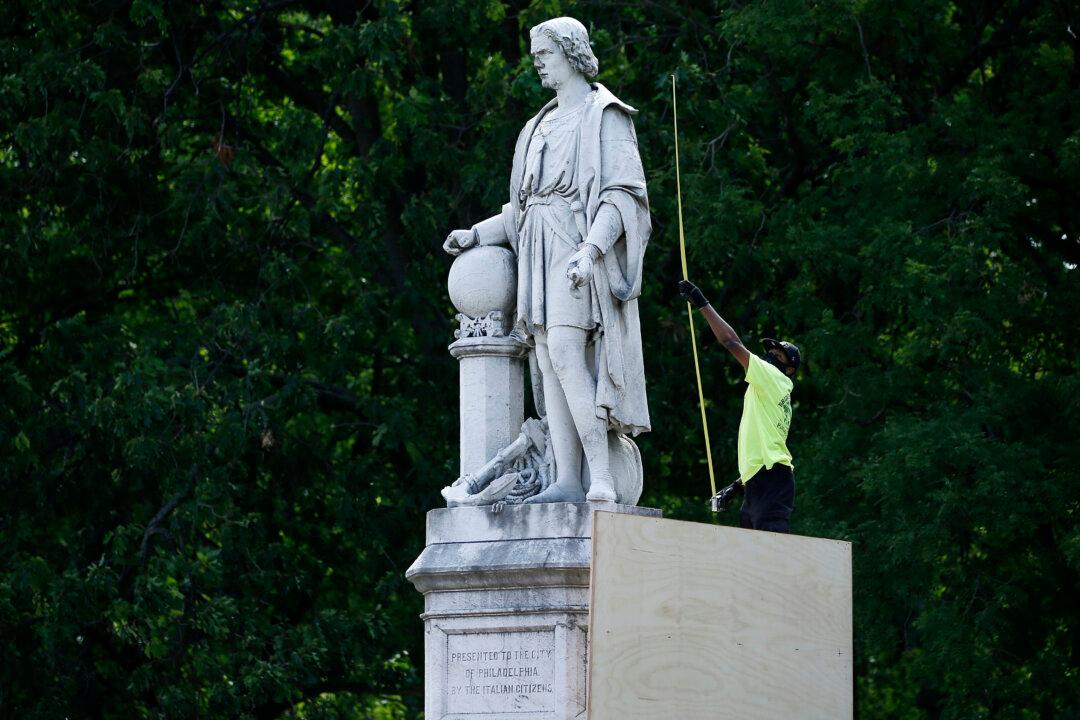Workers in Philadelphia have removed the box that had been covering a Christopher Columbus statue since clashes in 2020 between supporters of the monument and opponents who say it stands as a symbol of white supremacy.
Workers completed the work on Dec. 11, video footage from Marconi Plaza showed.





